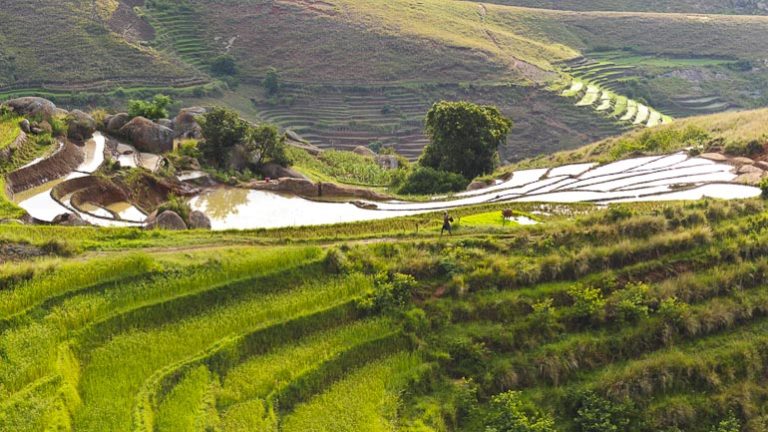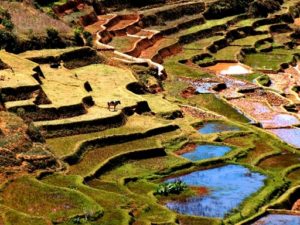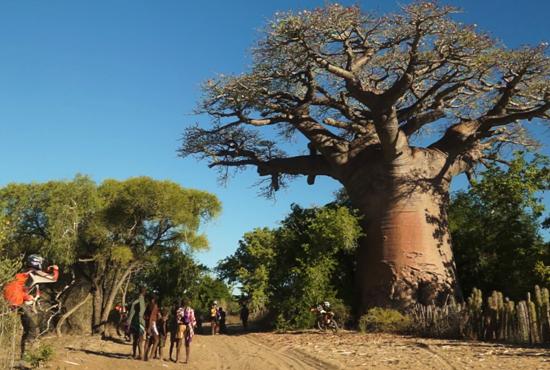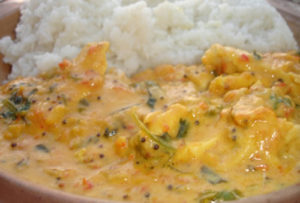Madagascar is a country that is highly dependent on agriculture, and rice is the main staple food. The rice fields shape the landscape and are of great importance to the population. Rice is cultivated in many regions of the country, with cultivation methods often being traditional and labor-intensive. However, for the people in Madagascar, rice is not only food but also a symbol of prosperity and social status.
Rice is clearly the main staple of the Malagasy people, whose ancestors are known to come from the Asian regions of the world. However, rice does not necessarily find the best conditions in Madagascar to grow well, strong, and productive. Especially in the dry regions in the south of the country, which you can explore on one of our individual trips to the land of the thorn people or on the 19-day trip from Antananarivo to Tulear, rice cannot be planted. In Madagascar, rice plays an important role not only in terms of the daily food supply of the people. Many of the numerous ethnic groups worship rice. In the rice plant, the Malagasy see something sacred. This explains why the Malagasy people invest so much energy in rice cultivation, even though planting and harvesting other crops would be easier, cheaper, and more profitable.
Island has been increasingly disrupted over the years. Large areas have been cleared for rice terraces and cultivation fields, and current developments show that there is still no change in awareness in this regard. Numerous forest areas are still being cleared to achieve high yields using the two common cultivation methods in Madagascar. Rice in Madagascar is grown on terraces following traditional methods from Indonesia. Depending on the cultivation region, up to three harvests per year are possible, but in most cases, the yields are not enough to meet the demand. The majority of Malagasy people rely on imported low-quality rice to meet their needs. Many rice farmers, who grow their own rice, cannot afford to consume it themselves and instead sell their yields to be able to afford the cheap, low-quality rice from abroad.
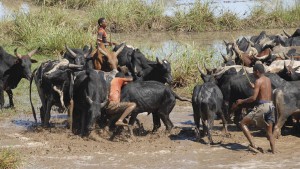
The rice cultivation in Madagascar is laborious and requires both physical strength and numerous hours. The first method of cultivation works as follows: in November, the rice is sown in small sections of irrigable rice fields. The vast areas of rice fields, on the other hand, are laboriously turned over by hand with a narrow spade. Then comes the irrigation. Once the clods are sufficiently soaked, they are either trampled and divided by oxen or primitive harrows. Since tilling the fields requires such a time and effort, multiple fields cannot be tilled simultaneously. Often, several families work together to till a single field. In addition to this wet method, there is also a so-called “dry” method, which. Rice cultivation in Madagascar is only carried out in the highlands, without external irrigation. The responsible parties always hope for a plentiful rainy season so that the rice can thrive without irrigation. The numerous rice terraces in the central highlands of Madagascar offer a beautiful and unique sight that you shouldn’t miss. You can also discover many rice fields on our tours to the East Coast and be enchanted by the exotic charm of the island of Madagascar. If you are interested in learning more about rice culture and general customs in Madagascar, or if you simply want to experience the unique culture of this fascinating island, don’t hesitate to contact us. If you have a desire to travel to Madagascar, let us know. We are happy to take care of your individual travel planning.

